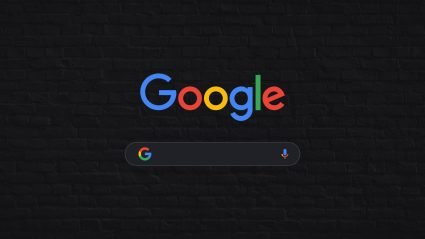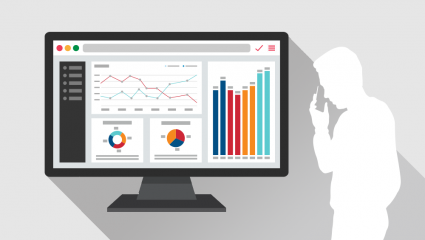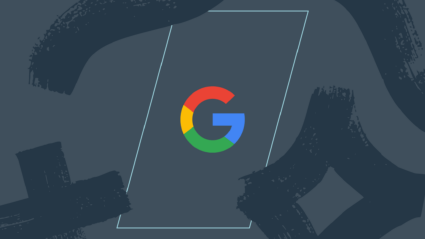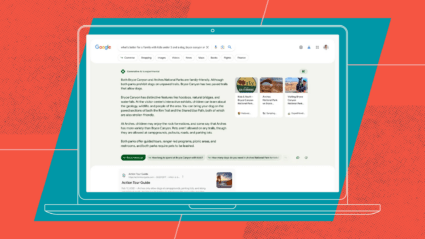It can seem like everyone in marketing is going all in on artificial intelligence (AI), and Google is leading the pack. Nowhere is this clearer than in the acceleration and expansion of Performance Max (PMax), a.k.a. the next generation of Smart Shopping campaigns.
After a not-insignificant initial resistance to PMax, it’s quickly shaping up to be the future of Google Ads. You have to level up your paid search strategy if you want to keep up. Essentially, PMax is helping marketers break down the barriers that stall success so you can meet business goals faster and more efficiently.
If you’re wary of automation and AI, that’s okay. But you need to remember that just because a machine can learn and optimize doesn’t mean you won’t have control. AI still needs the human touch to function. Think of it as another tool in your marketing arsenal–one you’ll need to adopt quickly if you want to compete with marketers and brands who are already leveraging it.
We brought together a dynamite team of Wpromote paid search experts including VP of Paid Search Jayme Hoy and Senior Directors of Paid Search Elyse Hoekstra and Ali Wuerfel to explore how you can maximize your results with PMax.
The future of AI and paid search is Google’s PMax
You’ve probably realized by now that AI is a big part of the future of digital marketing. You need to get comfortable with these new and evolving AI tools so that you can use them to your advantage as soon as possible.
But that doesn’t mean that AI can take over all of your marketing tasks. We’ve all heard people talk about AI as if it’s magical and can do everything, but it can’t (at least not yet). To leverage AI effectively in your advertising campaigns, you need humans to oversee both the inputs and the outputs.
That human touch is the key point of distinction between AI as we know it now and a fully automated process. AI is automation: it requires human beings to do the critical thinking. You can leverage that kind of technology to do more with less and work faster and more effectively. Automated processes, on the other hand, don’t need direct human oversight once they’re set up. They’re simpler processes that can run smoothly without any added insight.
“When we talk about automated, that’s more set it and forget it. It can be inflexible. It doesn’t necessarily take context into account. When we talk about automation, we’re talking about AI with that human touch. And the key here is that we’re leveraging technology and AI to do more with less, faster and more effectively.”
If automation is the future, what exactly is Google’s endgame when it comes to automation and PMax? We’ve learned over the years that Google doesn’t put resources into building and refining new products unless they have big plans for them, and PMax is no different. Someday soon, PMax will be the core bottom-funnel campaign type in Google Ads. Google is also already testing PMax campaigns for the mid-funnel, and they probably won’t stop there.

Before that happens, it’s time to get familiar with all of PMax’s amazing capabilities and learn how to optimize your results. PMax may be an AI-managed campaign type, but there’s a lot you can still control. Focus on these five critical levers:
- Map campaigns to business objectives: Strategically creating a campaign structure that aligns with business goals, customized with individual KPIs and creative, maximizes the impact of AI-driven campaigns.
- Creative & messaging: Attention-grabbing visuals and copy are critical during the user’s journey.
- Audience data & strategy: Leveraging first-party audience data, segmentation, and layering is vital to achieving business goals as in-browser identity persistence diminishes in quality.
- Measurement feedback loops: Feed the algorithm high-quality signals to influence modeling accuracy and optimization potential.
- On-site experience optimization: Minimize drop-off at the one-yard line to maintain or improve strong conversion rates at scale.
Maximize your PMax potential with thoughtful creative
The role of creative in paid search campaigns has evolved. We’re not just working with limited product images anymore–marketers can use multiple images, videos, and text assets to grab customers’ attention. All those new opportunities mean that quality creative is crucial if you want to reach the right audiences and optimize campaigns.
PMax campaigns use your text, image, and video assets to create and test hundreds of combinations, so Google can find the most effective versions across different audiences and environments.

To use this system effectively, you need to lean into letting AI help you test options and find the right combinations. Don’t try to game the system by providing fewer options in an effort to keep more control; that just lowers your chances of success.
Remember, PMax isn’t simply a shift when it comes to asset creation, it requires addition. Best practices for image creation include:
- Product focus: Show a single product, avoid complex visuals, show a human using the product, frame it centrally, and avoid dark images.
- Quality images: Upload high-definition images to avoid blurry or pixelated assets and avoid overlaid text. The product should stand on its own with logos and headlines complementing it.
- Brand identity: Leverage distinctive brand elements like symbols, faces, colors, fonts, taglines, imagery, etc. to make your identity stand out.
“We don’t want to overcorrect. Everything we’ve talked about up until now is based on what you’re going to input into your asset group, which is important. But for ecomm clients, a lot of the ad space within your PMax campaign is still shopping-focused. So don’t lose sight of the quality of your feed.”
As you make more PMax assets, keeping best practices in mind, you’ll also need to periodically request feed audits for creative gaps. Make sure you have all the right product-specific details within your headlines and descriptions, that the images you put in are high quality, and that you use annotations to stand out from competitors.
Google has multiple AI resources to create and edit videos including video creation, voice overlay, music overlay, and video cuts. You should pay close attention to all of your creative outputs to make sure any AI-generated assets are up to your brand’s standards. The quality of the creative you put out is extremely important to your success with PMax.
An advanced PMax strategy can take you to the next level
Before starting any PMax campaign, you should first ensure you understand your core business objectives (CBOs) and KPIs. Your CBOs describe the ultimate goal of your whole business. Marketing KPIs, on the other hand, are benchmarks marketers use to determine how effectively your marketing strategy is performing against your core business objective.
To take your search strategy to the next level, it must align with your brand’s CBOs, not just your marketing KPIs. These objectives play a critical role in driving your decisions around your PMax campaign structure and strategy. So the first steps in maximizing PMax success is understanding the difference between your CBOs and marketing KPIs and making sure your strategy is working to meet your overall goals rather than just hitting the numbers.

Once you have identified your CBOs, you can accomplish your objectives by aligning your campaign structure and strategy with your overarching business needs. Depending on your CBO, you can experiment with segmented versus consolidated campaign structures, as well as different strategies for audience layering, efficiency targets, and creative messaging.
After you’ve determined your PMax campaign strategy, the next most important task is refining your measurement. First, it’s important that you measure PMax in the context of your holistic Google Ads account performance, rather than measuring it in a silo compared to your other Google Ads campaign types.
Second, because you are aiming to achieve CBOs and therefore need to measure the impact on your entire business, ensure that you are leveraging internal data when making strategic decisions in your PMax and paid search strategy.
“We’re in a new era of paid search advertising. We have moved from the old school search market or mindset of treating the different campaign types as silos to really leaning into these more ubiquitous campaign types like Performance Max.”
Your internal data will be the ultimate source of truth, ensuring you are actually driving meaningful performance and achieving your CBOs.
With PMax and other AI tools coming on the scene, we’re in a new era of paid search advertising. That means everyone is still testing to see what works best for their brands while learning how to make the most of the technology.
When you’re getting started with PMax, don’t be afraid to try out new things; if you test something that doesn’t work, it doesn’t mean the whole product is a failure. It just means you need to test out something new. PMax is the future for paid search, so it’s time to start trying it out today.







Responses